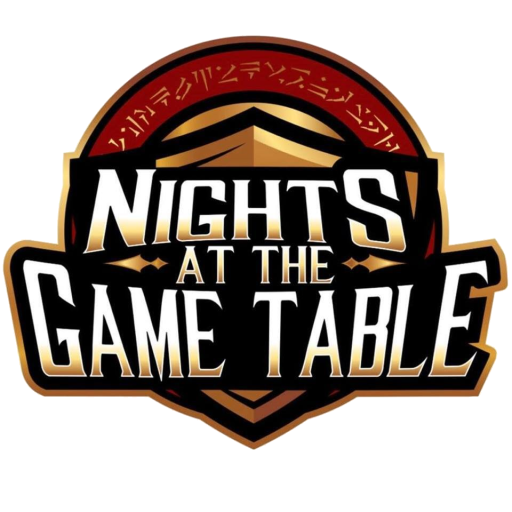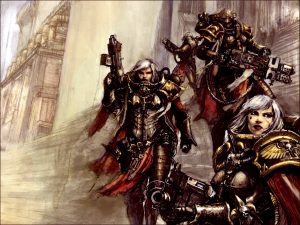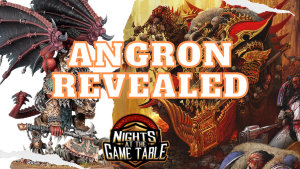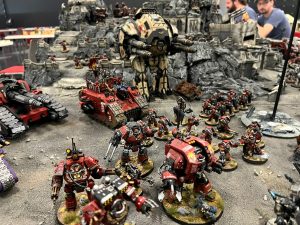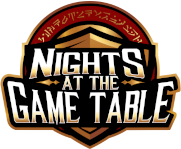Part of competing and winning a game of Warhammer (or any similarly cerebral competition) is the challenge of out-thinking your opponent. To do this, it can help to understand and “read” your opponent – their likely reactions and what they want to do, so that you can force them off their game plan or to make difficult decisions, leading them to be more likely to make mistakes.
Taking a page from poker psychology, for this article, we’re going to characterize gamers along two axes: tight vs loose, and reactive vs aggressive. There are countless methods of categorizing people’s tendencies and psychology, but this is one way that is straightforward enough to keep in mind during the opening stages of a game, without becoming a distraction.

Using the two axis of tight vs loose and reactive vs aggressive gives us four categories of opponent. Taking a page from Eric on the 11th Company Podcast several years ago, the four categories can be given nicknames to help remember and describe them:
- Aggressive-Loose: The Ork Warboss
- Aggressive-Tight: The Tank-Commander
- Reactive-Tight: The Drukhari Archon
- Reactive-Loose: The Daemon Changeling
These are both sliding scales and while most opponents will not be the caricatures we go over here, everyone will have a tendency to one direction or another. Part of the goal in getting a read on whether your opponent plays as an Aggressive-Loose Warboss or a Reactive Tight Archon is to take advantages of the potential weaknesses their play style creates or force them to do something out of character and make them uncomfortable. That is, to borrow a Poker term again, identify ways to “tilt” your opponent, which will put them off their game.
To do this, we need to understand the four different archetypes. We also need to keep in mind that despite my nicknames, an aggressive player doesn’t necessarily only play close-combat focused lists, and a reactive player doesn’t solely play gunline.
The Ork Warboss – Aggressive-Loose

Starting with the Ork Warboss, this player is both aggressive and loose in their play. Their aggression manifests in the desire to dictate the action and force the issue. Their looseness can be seen either in their placement and movement of models or in their decision making. The Warboss will often go into the game with a vague plan of closing quickly but will leap on any opportunity for more immediate aggression.
The strength of this playstyle is that it forces the action and builds on momentum. A warboss who is allowed to focus their aggression on a series of small attainable targets will steamroll their opponent and drag them down to their level, where they are strongest. The weakness of this playstyle is that it tends to be inexact about measurements and can be tempted to pursue lower-value targets or to slam itself into a brick wall.
The ways you can counter this style of play are to set traps, force them to check their aggression, and create solid roadblocks:
- Setting a trap will depend on your army, but basically the concept is setting a bait unit to direct the Warboss’s forces into a position where you can then punish them with counter-attacks or concentrated fire.
- Forcing a Warboss to check their aggression can be tough, but basically present them a situation where there is an obvious threat to moving forward, while they are somewhat safe sitting back. This is actually often the case of what happens when two Warbosses face off against each other – if they move blindly forward they are just moving into range of their opponent’s aggression.
- Setting roadblocks can be the riskiest counter because the Warboss will attack the roadblock with full force, using it as a springboard to jump further into your lines if it’s not tough enough to take the punishment. If you don’t have a solid roadblock, you’re better off aiming for misdirection; use speed and alternate deployment to split forces around his main path of aggression – forcing him to either split to pursue each element, or ignore some.
The Tank-Commander – Aggressive-Tight

As an aggressive player, the Tank-Commander wants to dictate the pace and flow of the game. As a tight player, they also calculate their aggression and have a plan in place for dealing with counters. An example of this playstyle is a gun-line player who is very good at setting their screens and bubbles to protect their main guns, which they bring to bear from the start.
The strength of this playstyle is that it puts on the aggression but without the weaknesses of blind-aggression more prone to a Warboss playerstyle. It’s weaknesses lie in the fact that it relies on calculated and planned aggression, so disruption to those plans force the player to become reactive.
The ways to counter or alter this playstyle are similar to those to counter a Warboss: setting traps and checking aggression. However, this playstyle can also struggle when faced with similar or excessive aggression or when put “off-script.” A tight player will often have a plan that encapsulates the next moves and might be put on tilt when those next moves are no longer an option.
The Drukhari Archon – Reactive-Tight

Similar to the Tank-Commander, the Archon has a script for the game and how they want it to go. However, unlike the direct aggression of a Tank-Commander or a Warboss, the Archon is most comfortable having the opponent make the first move so they can then proceed with a series of planned counter-moves.
The strength of this playstyle is that it is possibly the most calculating and patient, with the player having multiple paths to victory planned out, and is most comfortable when reacting to and countering the goals and moves of the opponent. The weakness of this playstyle is that it relies to some degree on the opponent doing something they expect, and on them being aggressive.
To counter this playstyle, you can be passive and force them to take the lead; act counter to expectations; or be over-aggressive.
- Being passive means the Archon player will be pressured to initiate the action. If their gameplan revolves around the enemy coming toward them and then pouncing, staying back and out of range forces the Archon to choose between delaying their plans, and then possibly not having enough time, and becoming the aggressor.
- Acting counter to expectations can be risky as taken to extremes it just means not doing what you need to do. However, if you can use a typically aggressive unit to be a reactive, counter-charge unit, the Archon has to change up their own plans and expectations for the game.
- Being over-aggressive can counter the Archon’s plans when that aggression exceeds the planned counters and mitigations the Archon had in place.
The Changeling – Reactive Loose

The changeling embodies the Reactive nature of the Archon, with the Loose nature of the Warboss. The epitome of adaptability, this player may not have a plan in place, but allows their game to flow like water, reacting to the game-state as it comes.
The strength of this playstyle is that it is largely difficult to put on tilt – not having a plan means there’s nothing to change when an opponent acts out of character. This player generally will have flexibility and counters built into their list, with plenty of redundancy, allowing them to react in whatever way is needed despite any losses. The weaknesses lie in both the desire to be reactive, like the Archon, and the tendency to play a bit looser, like the Warboss.
To counter this playstyle, you can be more passive, forcing this player to act; set traps that they can fall into if they are imprecise in their movement, and aggressively attacking openings. These are all similar to counters for the other play-styles. The most unique counter for this style is that the reactions and counters of this list can sometimes be unplanned and either too strong or too light, creating openings for an aggressive player to exploit.
This is just the lightest of overviews of these playstyles and approaches to the game. The goal of identifying and categorizing where an opponent leans is to identify early on how they will approach the game, how they will utilize the tools in their list, and how you might be able to put them off their game and try to put them on tilt.
